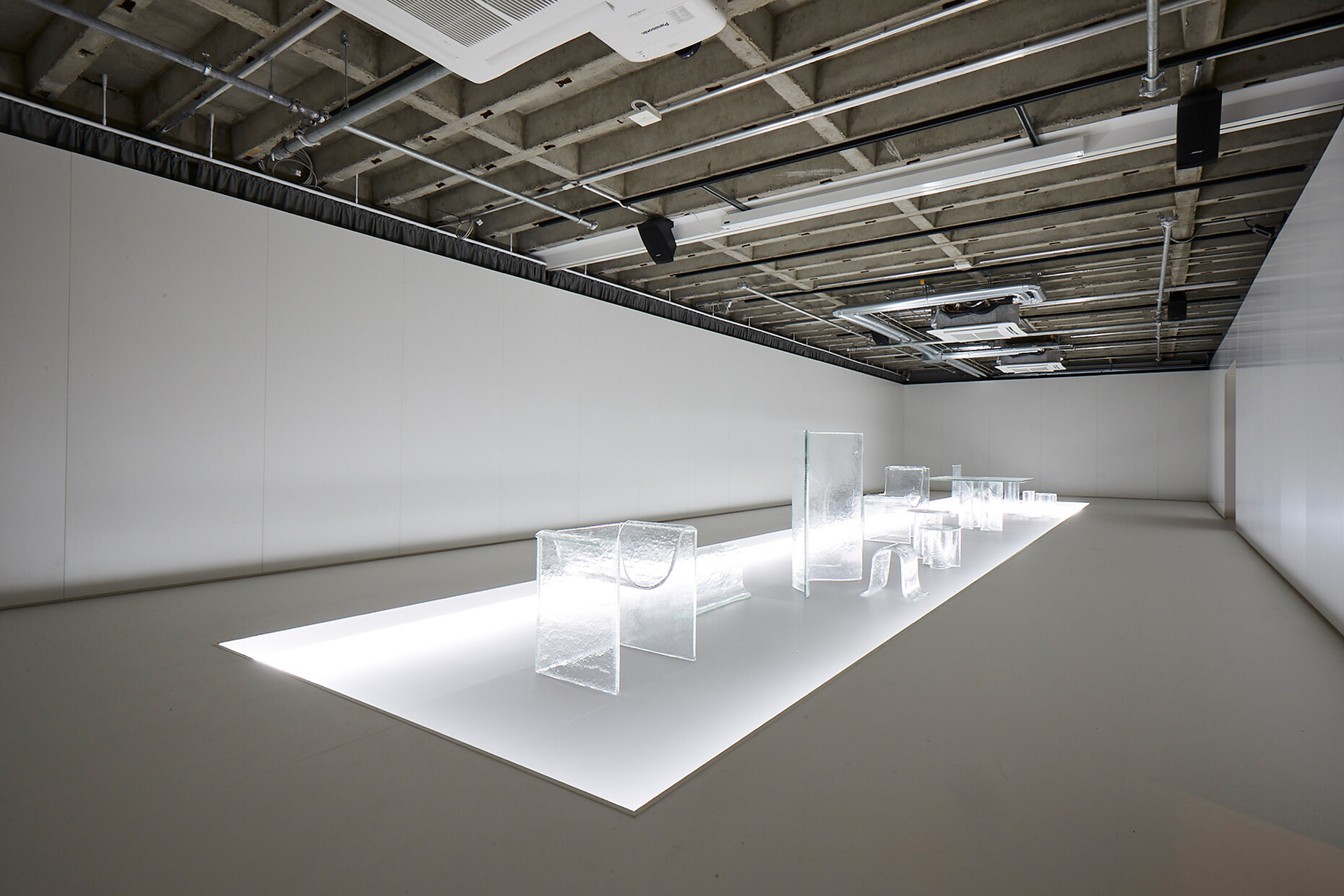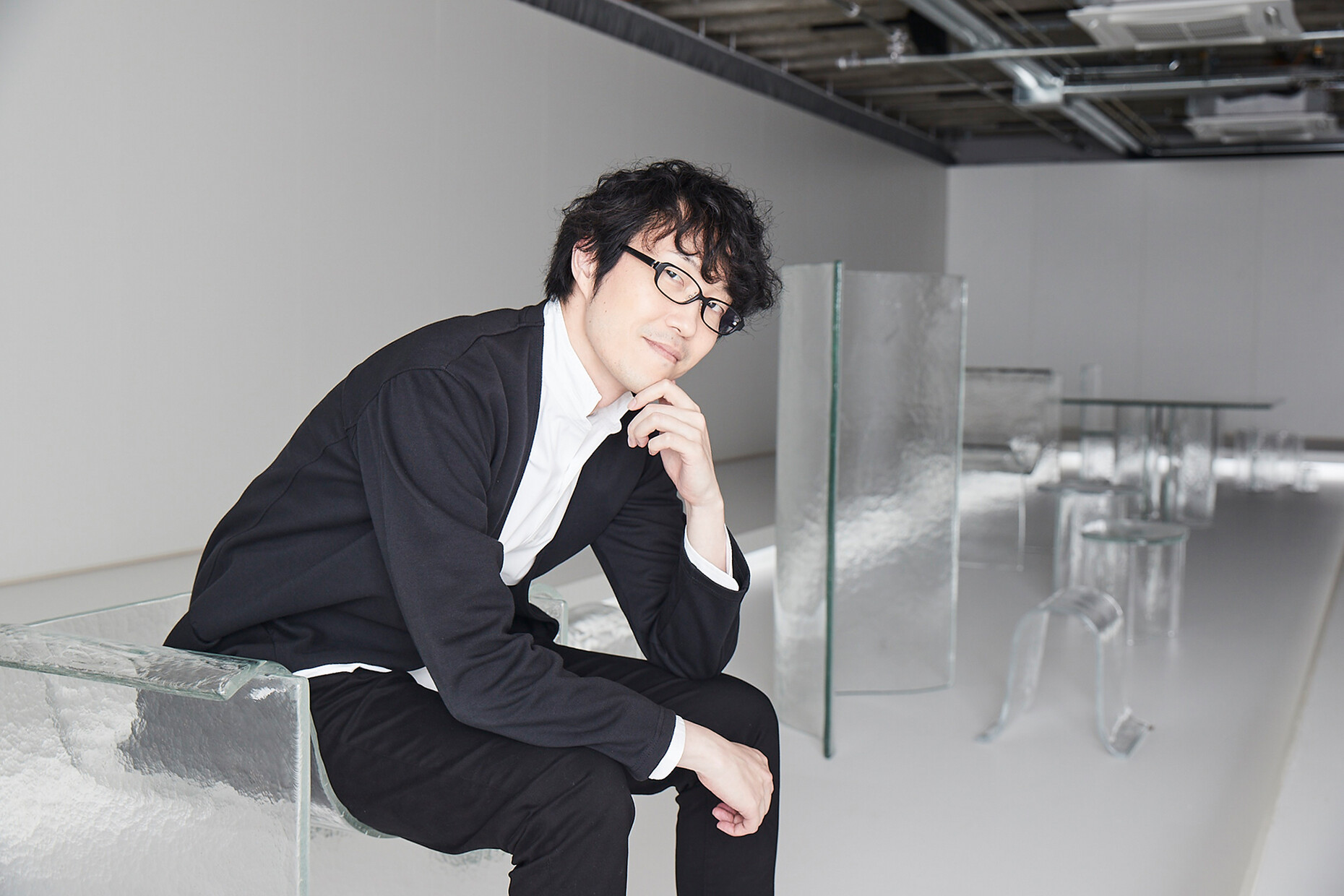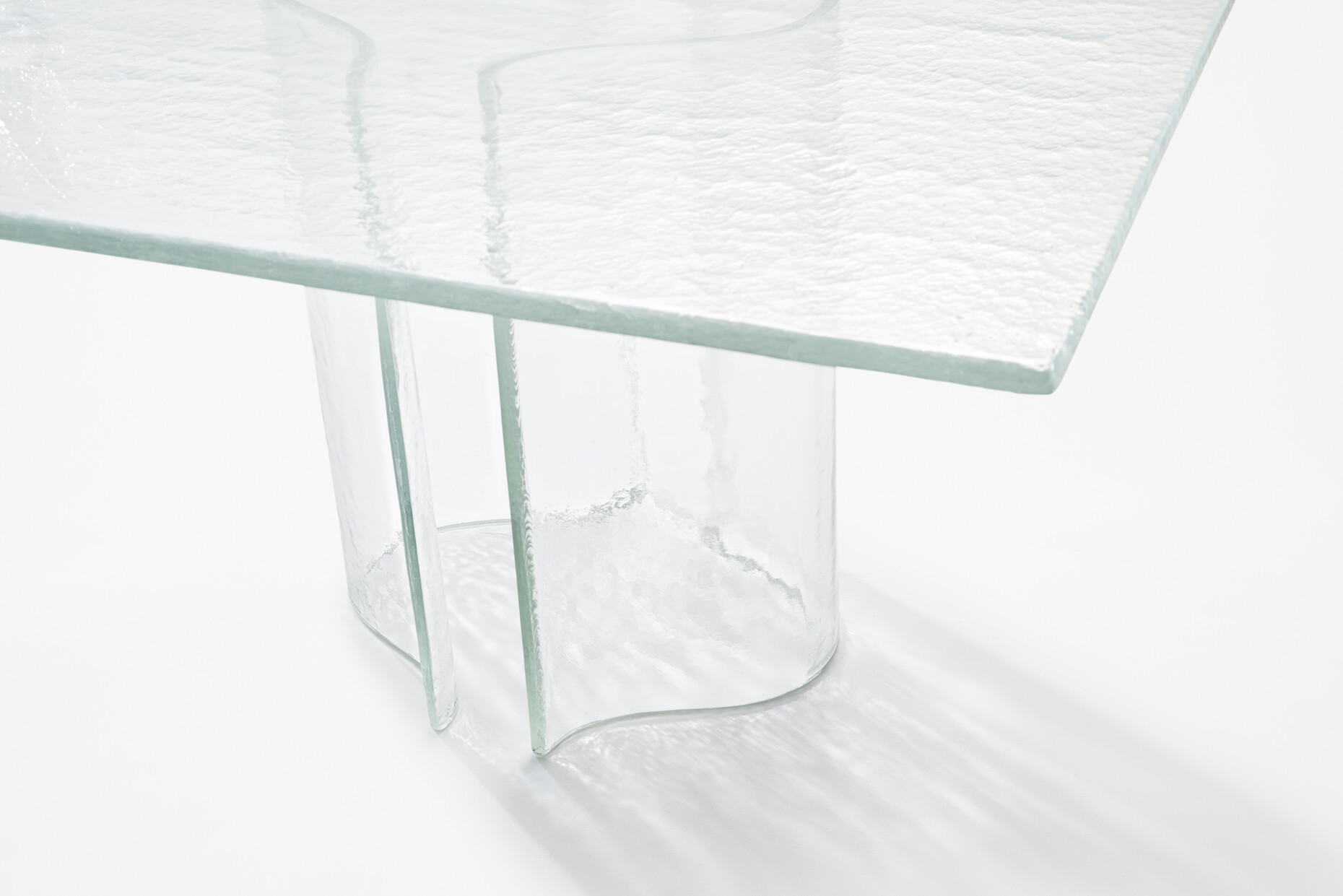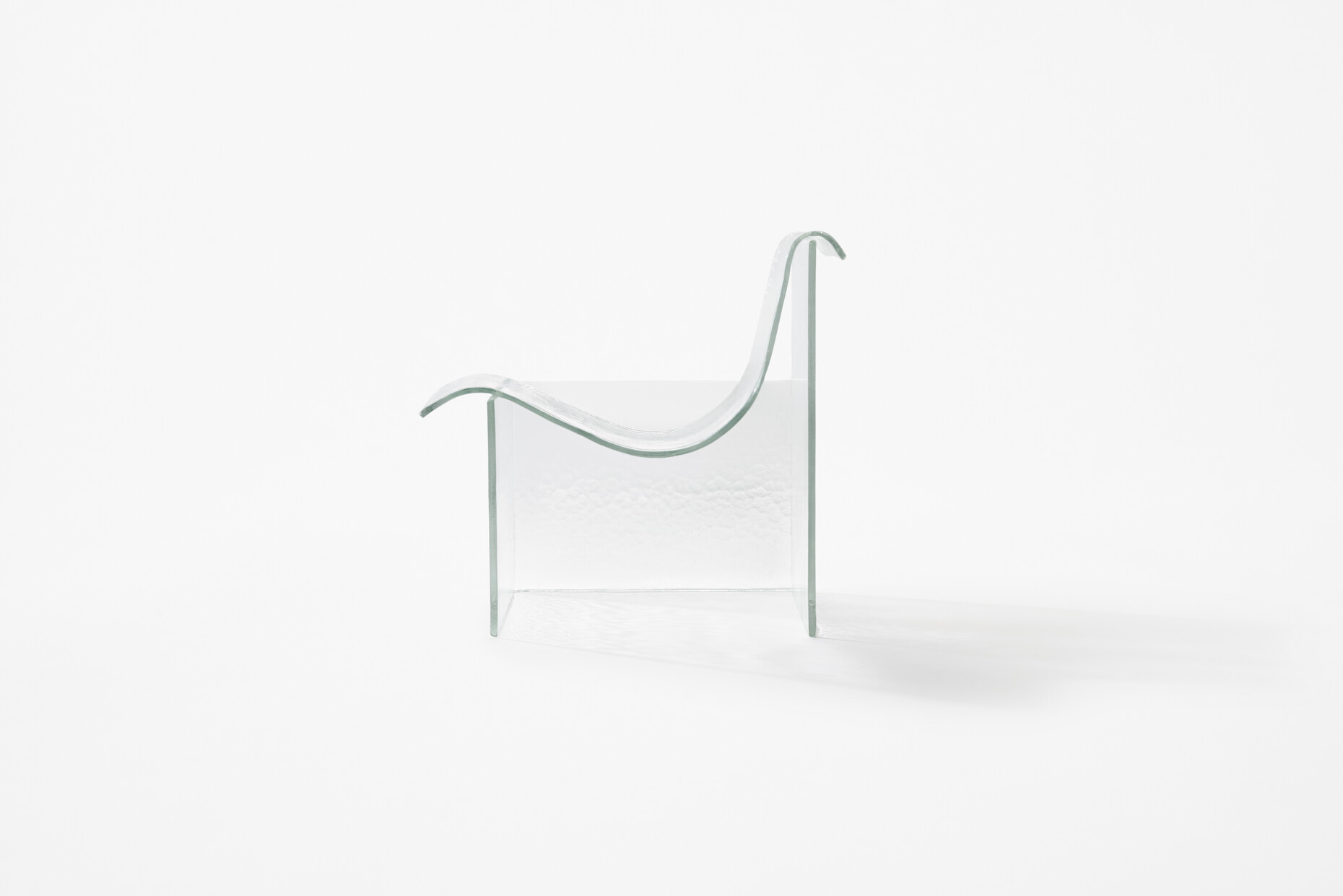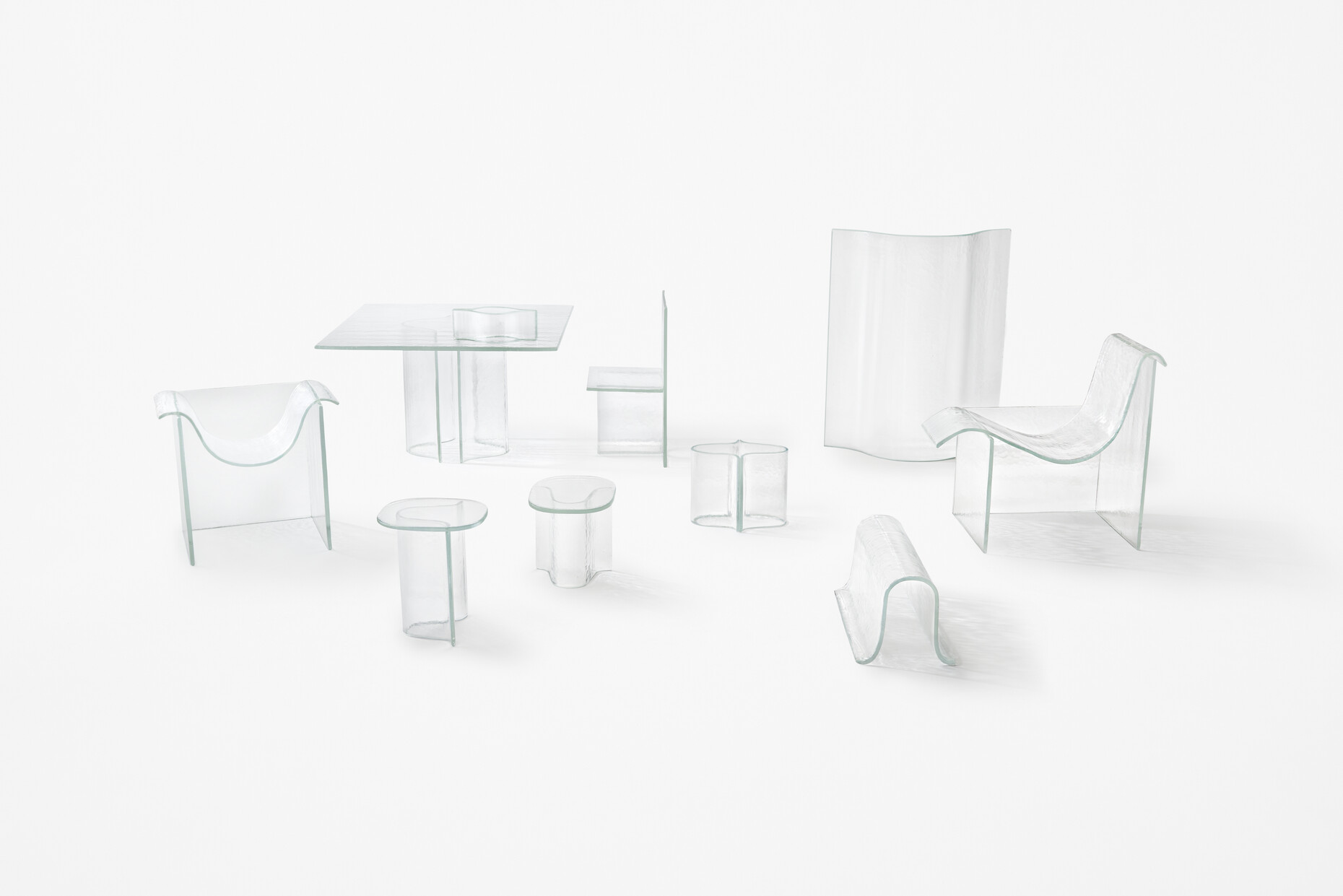IMM COLOGNE 2019
Objects from the Nendo era
Designs by Tokyo-based design studio Nendo are instantly recognizable. Arguably Oki Sato, the mind behind Nendo, is the first person since Philippe Starck’s heyday in the 1980s and 1990s whose design has such a characteristic and uniform handwriting. Now he has designed a collection of glass furniture for Wonderglass, which was presented in Cologne to coincide with his receiving the “A&W Designer of the Year”award. Fabian Peters met Oki Sato for an interview.
Fabian Peters: You have succeeded in developing a formal language that is simultaneously universal and individual. How did you manage that?
Oki Sato: Thank you very much for the compliment. Actually, I simply only design things that I like myself. I really can’t imagine doing it any differently. That is probably why my design language is so consistent.
What inspired you in your latest collaboration with Wonderglass?
Oki Sato: I was very impressed when I visited the glassmaking firm in Venice. Admittedly, I have already collaborated with several glass manufacturers in the past, for example, with the Czech firm Lasvit, but that involved blown glass. By contrast, Wonderglass uses a special technique to cast glass, and this glass has a consistency similar to clay or plasticine. Initially, a slab of hot glass is shaped, which the glassmakers then refine using their special tools. I had the idea of designing large objects, items of furniture. After all, with this technique it is also possible to create a large object without it becoming overly expensive, because everything is produced from glass slabs and doesn’t involve having to make molds, as is the case in blowing glass. Moreover, I asked the glassmakers to work the glass as little as possible. I wanted a coarse appearance. Neither the surfaces nor the edges are polished. Everything was to look as if it was not the work of a designer or craftsperson, but as if the material had created this shape itself.
All around the country people are copying your work, firms are launching Nendo-like designed products. Do you find that annoying or do you see it rather as a compliment?
Oki Sato: Primarily I see it as motivation to develop myself further – and to be honest I’m happy about it. Even though it might surprise you: I have the impression that I can become a whole lot better as a designer. What would be more boring than being able to do something well?! Getting better is my greatest motivation.
In what direction do you want to develop?
Oki Sato: Well, Nendo has already worked in many areas – furniture design, industrial design, graphic art, interior design – but now we would like to turn our attention to architecture.
You are actually a trained architect.
Oki Sato: That’s right. Early on in my career I built several smaller houses. After a while I realized I’d like to take a break to think about what architecture means to me. Originally, I wanted to spend this time just with design work. But things turned out differently. And now some 15/16 years later I feel ready to work as an architect again. If all goes well I will be able to present two or three projects this year and roughly the same number in 2020. Please don’t ask me where all of this will lead, but at the moment I get a great deal of enjoyment out of it!
Can you describe how you see your architecture?
Oki Sato: Well, first of all I’m trying to put to fruitful use as an architect lots of the things I learned as a product designer. Through this method I want to try to find a new approach of my own in architecture. New materials, new technologies – everything I have already explored in design I would now like to explore in architecture. Admittedly, architecture is a rather traditional discipline and develops extremely slowly in comparison with, say, the IT field or design. But it is less a matter of accelerating development and much more about creating new possibilities!
Are you starting with small projects now or are you immediately thinking in larger dimensions?
Oki Sato: The first buildings will tend to be small, but we are working simultaneously on designs for larger projects. We will try to experiment a lot in the coming years, and I believe that this in turn will also impact on our work as designers.
Do you see Nendo as a kind of think tank that also operates in larger dimensions that go beyond pure design tasks?
Oki Sato: In Japan we have also started to work as design consultants. In my opinion, we ought to stop just realizing projects and instead collaborate with our customers to define our tasks. After all, often we can open up new perspectives for clients. Occasionally, we have ideas that do not necessarily provide a solution to a design task, but are nonetheless suited to changing the world.
